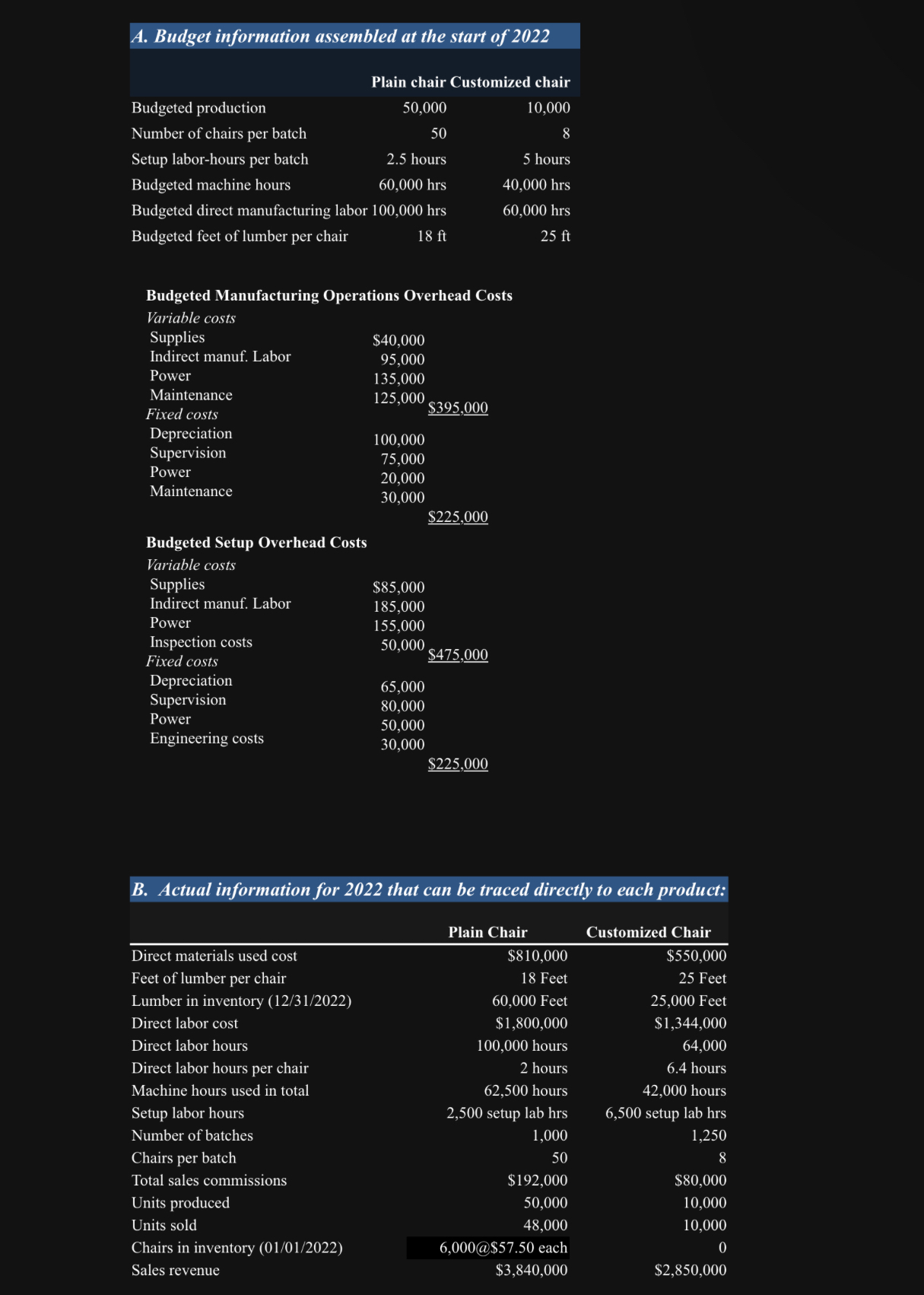Answered step by step
Verified Expert Solution
Question
1 Approved Answer
Requirements for Part 2 due Friday, November 1 7 Budgeting, Variance Analysis, and Standard Costing / Variance Analysis. 8 . Compute the sales budget, the
Requirements for Part due Friday, November
Budgeting, Variance Analysis, and Standard CostingVariance Analysis.
Compute the sales budget, the production budget, the direct material usage and purchases budget, the
direct labor budget, the manufacturing overhead budget, the ending inventories budget, the cost of
goods sold budget, the selling and administration budget, the budgeted income statement, and the
cash budget for
Skip to the end of At the end of the following actual quantities and costs were recorded:
A total of plain chairs and customized chairs were produced and sold in at
average selling prices of $ and $ respectively. A total of feet of Poplar wood
was purchased for the plain chairs at a cost of $ A total of feet of Red oak wood
was purchased for the customized chairs at a cost of $ feet of lumber were used
to produce the plain chairs, and feet of lumber were used to create the customized chairs.
direct labor hours were traced to the plain chairs, and direct labor hours were traced
to the customized chairs. A total of $ in wages was paid to the manufacturing workers
traced to plain $ and customized $ workers Actual machine hours were
and for the plain and customized chairs, respectively. Further, for manufacturing operations
overhead actual fixed costs were $ and actual variable costs were $ For machine
setup overhead costs, actual fixed costs were $ and actual variable costs were $
Plain chairs were produced in batches of chairs and used hours per batch. Customized chairs
were produced in batches, on average, of chairs and used hours per batch.
a Calculate the direct material price variance, the direct material efficiency variance, the direct
labor price variance, and the direct labor efficiency variance for each of the product lines
separately. Also, for each overhead activity calculate the FMOH spending and production
volume variances for the Chair division and the VMOH spending and efficiency variances
for the two products.
b Which of the variances that you calculated should you investigate and why? Provide
possible reasons for the variances.Plain chair Customized chair
Budgeted production
Number of chairs per batch
Setup laborhours per batch
Budgeted machine hours
Budgeted direct manufacturing labor
Budgeted feet of lumber per chair
hours
hours
hrs
Budgeted Manufacturing Operations Overhead Costs
Variable costs
Supplies $
Indirect manuf. Labor
Power
Maintenance
Fixed costs $$
Depreciation
Supervision
Power
Maintenance
$
Budgeted Setup Overhead Costs
Variable costs
$
B Actual information for that can be traced directly to each product:
Plain Chair

Step by Step Solution
There are 3 Steps involved in it
Step: 1

Get Instant Access to Expert-Tailored Solutions
See step-by-step solutions with expert insights and AI powered tools for academic success
Step: 2

Step: 3

Ace Your Homework with AI
Get the answers you need in no time with our AI-driven, step-by-step assistance
Get Started


